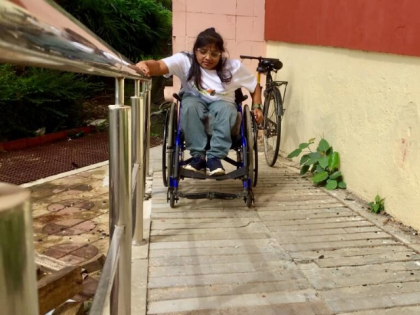Mumbai: BMC Revamps City Footpaths with Disabled-Friendly Features Ahead of Monsoon
By Lokmat English Desk | Updated: May 15, 2025 16:16 IST2025-05-15T16:15:33+5:302025-05-15T16:16:24+5:30
Under our feet, on the city's walkways, a subtle but important change is occurring as Mumbai scrambles to finish ...

Mumbai: BMC Revamps City Footpaths with Disabled-Friendly Features Ahead of Monsoon
Under our feet, on the city's walkways, a subtle but important change is occurring as Mumbai scrambles to finish important concrete roadworks before the monsoon arrives. The pavements constructed beside concrete roadways are now being made accessible, especially for people with impairments, by the Brihanmumbai Municipal Corporation (BMC). This effort, led by Additional Municipal Commissioner (Projects) Abhijit Bangar, reflects a growing understanding that roads serve people as well as cars. Bangar stressed the need for "accessible, barrier-free, and disabled-friendly pathways" when he recently inspected concrete roadworks in eastern areas like Mulund, Powai, and Chembur.
He gave engineers strong instructions to create these roads in accordance with Indian Roads Congress (IRC) standards. Those dotted or grooved pathways that aid the blind and visually impaired are known as tactile tiles, and they are essential to this accessibility. These tiles are now being used as standard equipment, guaranteeing that everyone, not only those with physical capabilities, can walk safely. Wheelchair users and the elderly are also being accommodated by giving priority to smooth, obstruction-free surfaces and moderate slopes.
However, it goes beyond simple compliance. It feels like a more humanitarian approach is being given this time.
Bangar observed during his investigation that uneven pavement chambers frequently impede accessibility, negating the whole intent behind such designs. In order to address this, he has recommended seeking advice from specialists, such as IIT Bombay, for practical solutions that strike a balance between inclusion and utility. Although the intricacies of joint sealing, Mastick asphalting, and pavement quality concrete (PQC) persist behind the scenes, the change in public attitude is welcome. Footpaths are now viewed by the BMC as public areas in and of themselves, rather than as an afterthought.
The program coincides with heightened surveillance of Mumbai's roads. Potholes, poor finishing, and blocked pathways have long been complaints from the public. Engaging locals and pressing engineers to guarantee excellent finishing, from painting roads to putting up appropriate signage, demonstrates a methodical effort to restore public confidence.
Open in app